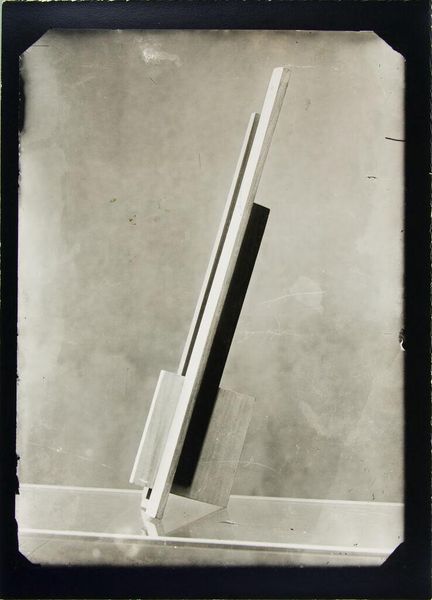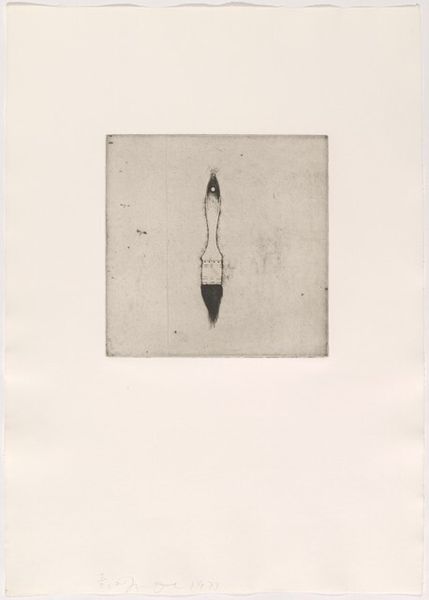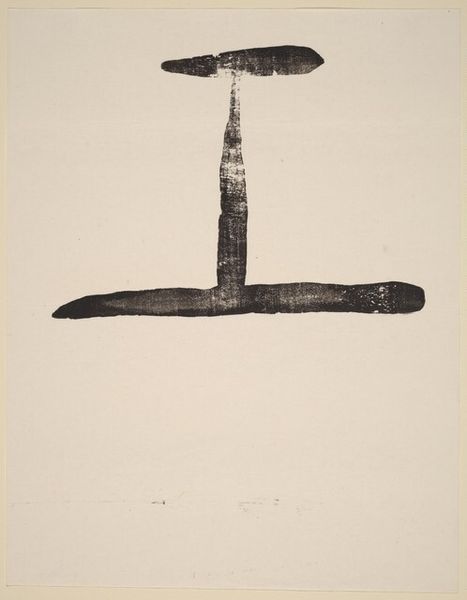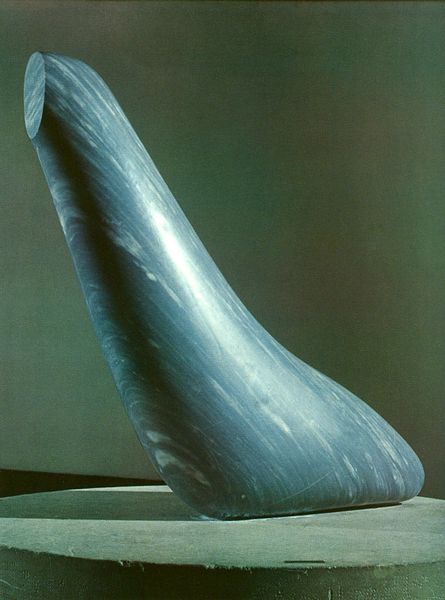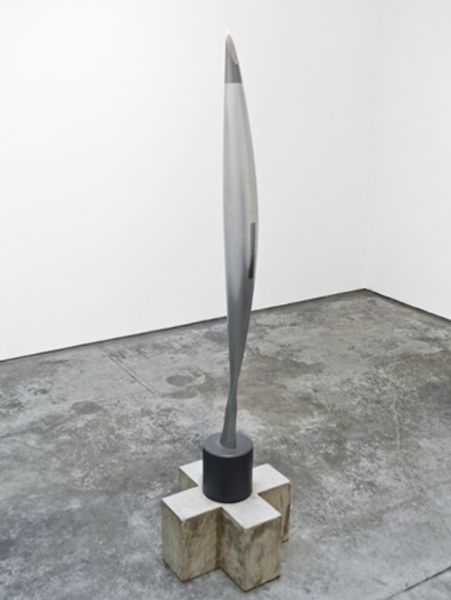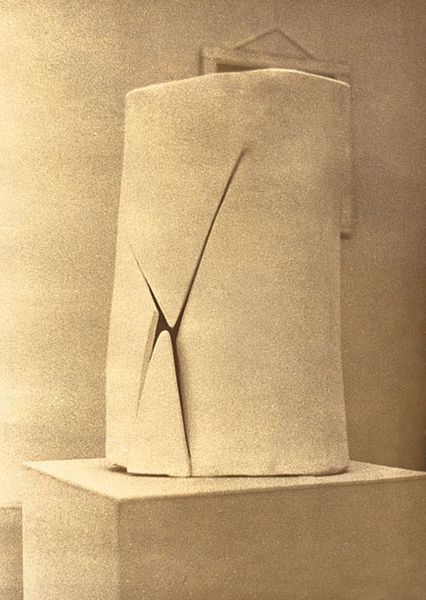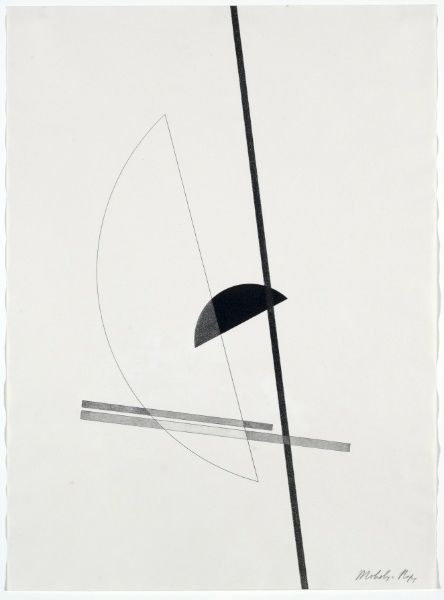
metal, sculpture
#
minimalism
#
metal
#
abstract
#
form
#
geometric
#
sculpture
#
line
#
monochrome
#
monochrome
Copyright: Katsuhito Nishikawa,Fair Use
Editor: Here we have Katsuhito Nishikawa's "Untitled" sculpture from 1987, crafted in metal. It's strikingly simple, almost like an elongated spindle. What material considerations do you find most compelling in this piece? Curator: It's fascinating how Nishikawa coaxes such delicate presence from an industrial material like metal. Think about the labor involved: the cutting, welding, polishing to achieve that smooth, almost ethereal surface. That transformation of raw material through a deliberate process – it speaks volumes about the artist’s control and vision. What’s your take on the sculpture’s surface? Editor: It seems deliberately unfinished at the top, contrasting with the smooth body. It breaks with the overall intention... Curator: Exactly! That "unfinished" aspect, as you say, disrupts the expected perfection, revealing a critical element of making: it alludes to the ongoing tension between industrial fabrication and the artist's intervention. Consider Minimalism as a trend that often emphasizes the mass-produced, while subtly drawing our attention to the human labor that's been put into such geometric objects. Editor: So, by leaving traces of the work, it acknowledges its manufactured origins, rejecting traditional artistic expression in a way? Curator: Precisely! The process becomes part of the narrative, challenging notions of artistic genius, and instead foregrounding the labor, the material, and even the social implications of mass production influencing form. Editor: This certainly makes me reconsider what I see. Highlighting the process reshapes my perspective on minimalism in general. Curator: Indeed, art can offer that; revealing complex systems operating quietly beneath a seemingly pure, and almost spiritual surface.
Comments
No comments
Be the first to comment and join the conversation on the ultimate creative platform.




